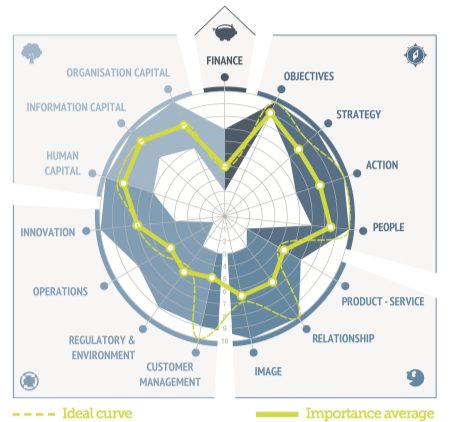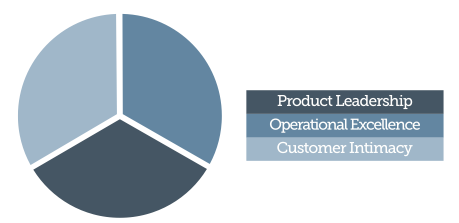The Software Partner Channel and Customer Value Propositions (part 2)

To read part 1 of this post, please follow this link:
The Software Partner Channel and Customer Value Propositions (part 1)
With the book “The Discipline of Market Leaders” – published in 1995 – Michael Treacy and Fred Wiersema introduced the principles behind the three value elements. The book also introduced the relationship between the customer value proposition and the operating processes, the management systems, the business structure and the culture required to deliver on the value proposition.
The relationship between value proposition and management areas
TBK Consult considers that any company has 15 management areas divided into 5 perspectives[5]:
The Financial Perspective
- Financial performance
The Management Perspective
- Setting objectives
- Defining strategy
- Taking action
- Management skills and competencies
The Customer Perspective
- The Product/service
- The Customer Relationship
- The Image
The Internal Processes Perspective
- Operations
- Regulatory & Environment
- Customer Management
- Innovation
The Learning/Growth Perspective
- Organization Capital
- Information Capital
- Human Capital
Delivering a specific customer value proposition to the market and growing it to the position of market leader requires a specific combination of the management areas, which each company must engineer for itself.
Building and maintaining the internal infrastructure to deliver a certain customer value proposition and outperform the market is a long-term project.
Changing the Customer Value Proposition
The Customer Value Proposition analysis above also explains why it is extremely difficult for software vendors who are serving their customers directly to move to an indirect reseller based business model.
The Customer Value Proposition in Figure 2 is strategically unfocused, which is required for serving customers directly with a Customer Intimacy driven value proposition.
The software vendor’s Customer Intimacy and Operational Excellence value elements are developed to serve customers directly and are of no value to the resellers.
The resellers want a software vendor with a strong focus on Product Leadership, thus enabling the resellers to add value through their own services associated with the product.
The value proposition and the management challenges
Changing the Customer Value Proposition is a risky, expensive and long-term project.
Why?
Mastering each element in the value proposition requires completely different management focus, organizational skill sets, financial KPI’s, customer relationships and internal procedures.
Product Leadership requires the ability to innovate faster than your competitors. You have a strong product focus, because your innovation strategy requires being three steps ahead of the market. You must produce blockbusters from time to time that can provide return on your investments is innovation and product development. You will most likely have a product serving a very large market and you are obsessed with global market share.
Customer Intimacy requires deep and long lasting customer relationships. Cost of sales is high and professional services are your key delivery. You most likely have few, but very large customers. You are obsessed with utilization and customer lifetime value. You must take one market at a time, thus local market share is more important than global market share.
Operational Excellence requires focus on processes and metrics. You must be capable of continuously squeezing waste out of your operational processes. You will most likely have a product serving a very large market and you are obsessed with global market share.
Changing a software company from a direct to an indirect channel approach
The software industry gives birth to many software companies that take a direct channel approach to their local market in the early days of the company’s life cycle. When the time comes for scaling, the opportunity for taking an indirect channel approach is considered. Especially when moving into new (geographic) markets, the indirect channel approach seems attractive for the reasons mentioned above.
However, a software company cannot move from a direct channel to an indirect channel approach without making fundamental changes to the management focus, the organizational skill sets, financial KPI’s, customer relationships and internal procedures.
The fastest solution is probably splitting the software company into two units with separate P&L[6] responsibilities:
- A “software house” with no customer projects
- A “reseller” serving customers, but with no core software development responsibility
The “software house” will now focus on product development and channel recruitment and management. They will no longer serve customers directly.
The “reseller” will focus on winning and serving customers. They may do some product development to enrich the product for their customers and reuse certain features across their customer base, but their primary focus is the individual customer and the lifetime value of this relationship.
[5] The TBK Consult principles are based on an extension of the Balanced Scorecard principles.
[6] P&L: Profit & Loss










